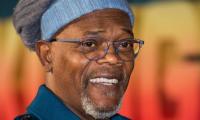The IMF’s recent press release pursuant to Article IV consultation with the government of Pakistan indicates that the country’s real exchange rate is overvalued by between 10 and 20 percent.
(The real exchange rate refers to the nominal or market exchange rate that is adjusted for the home country’s rate of inflation relative to inflation in countries that are competitors in international markets. As a result, countries with relatively higher rates of inflation should have depreciating market exchange rates to compensate for the loss of competitiveness in international markets.)
This means that the rupee should trade around Rs118 against the US dollar instead of the current Rs107 or thereabouts.
An overvalued real exchange rate means that exports are placed at a competitive disadvantage in international markets whereas imports become relatively more attractive to purchase as compared to home-produced import substitutes. Since Pakistan’s nominal exchange rate has not adjusted downwards to the extent warranted by the cost-of-production considerations, many observers point to this as a major, if not the only, reason for the widening trade deficit.
There has, indeed, been a marked decline in Pakistan’s exports of goods from about $24.8 billion in 2012-13 to around $22 billion in 2015-16 which are further projected to dip to $21.8 billion in 2016-17. On the other hand, the imports of goods are projected to rise to $45.6 billion in 2016-17 from 40.2 billion in 2012-13 even though international oil prices have declined from an average of about $108 in 2012-13 to about $50 in 2016/17.
The saving grace for the current account of the balance of payments are worker remittances, which have erased to a great extent the deficit in goods, services and primary income components of the current account.
What other factors account for our poor export performance? Certainly, one cannot attribute the poor export performance just to an overvalued exchange rate. There are also non-price factors to consider.
The factors explaining Pakistan’s poor export performance have been analysed time and again in the past. For instance, a 2008 report on the country’s economy by the Asian Development Bank (ADB) pointed a finger for the weak export performance to ‘the lack of export sophistication”. What they meant by this was the lack of export diversification and a heavy reliance on low value-added textiles and garments.
The ADB report found that that Pakistan’s exports grew less than proportionately compared to growth of GDP in key export markets and concluded that this low (income) elasticity measure reflected the poor quality of Pakistan’s exports. One doubts whether the situation has changed in the nine years since the publication of this report.
The IMF’s recommendation of currency depreciation is in line with traditional economic remedies to cure a trade imbalance. On the other hand, an ‘elasticity pessimist’ – someone who believes that currency depreciation will not result in any marked change in the trade balance of a country – would argue that the rupee depreciation will only serve as a temporary palliative instead of addressing the fundamental structural problems facing Pakistan’s exporters.
One reason could be that competitive depreciations by competitors could negate the price advantage of a weaker exchange rate, with importers focusing on the quality and strength of the relationship with the suppliers in the exporting country rather than just on low cost. This is especially true in a world where up to 70 percent of international trade is channelled through multinational companies and the global supply chains they operate.
On the supply side, it is also the case that exporters may not respond robustly enough to a rupee depreciation owing to the infrastructural constraints – particularly the power shortages and transport bottlenecks that they face – and thereby defeat the purpose of the currency depreciation. One major benefit of CPEC is that the project is expected to ease the energy crunch with a corresponding boost for export competitiveness.
As for imports, the higher local currency prices due to currency depreciation will inject cost-push inflationary pressures in the economy due to the high import content of many goods and services (locally-assembled cars, buses and cell phones) as well as imports of capital goods. Higher petroleum and energy prices, in particular, will feed through into higher domestic costs of production and reduce, if not altogether negate, the competitive edge that exporters may have gained because of the weaker currency.
There is also a key reason why any finance minister in the country would balk before agreeing to a weaker rupee: the size of the country’s foreign currency debt and its repayment. A depreciation in the currency will increase the financial burden on the country to repay this debt depending on the extent of the depreciation and the maturity profile of the debt. Moreover, any boost in export earnings will take time to materialise whereas the higher burden of foreign debt will be felt almost immediately and pose an agonisingly large liquidity mismatch between receipts and payments.
Since the country’s external debt has been build up to around $60 billion, the IMF projects that the country’s debt-servicing to export earnings ratio will reach an all-time high of 29.2 percent in 2016-17. However, it is likely to decline sharply to 21.4 percent in 2017-18, presumably because exports will have risen significantly in the succeeding year. Other observers are far less sanguine on this point considering the debt-servicing mountain that Pakistan has to climb in the next few years with between $2.5 billion to $3 billion in yearly repayments on account of CPEC-related loans alone.
If the economy stumbles for any reason such as a recession in major export markets, we are in for a period of economic turmoil characterised by low growth, declining investment, a sharp fall in the exchange rate and drastic cuts in government expenditures, particularly of development programmes. Borrowing from foreign sources is inevitable. But the financial costs will be much greater and the terms are likely to be far more onerous given that Pakistan’s credit rating is likely to be downgraded by the international credit-rating agencies.
The IMF is aware of this risk factor and says: “Pakistan will face increasing government and CPEC-related external repayment obligations, and external financing needs are projected to increase to nearly 7.5 percent of GDP over the medium term”.
Currency depreciation is certainly not a cure-all for Pakistan’s lacklustre exports. At best, it will provide some breathing space in the short run. However, it is something we should anticipate since this a condition for the IMF’s seal of good housekeeping. In their report, they are critical of the cash margin requirements introduced by the State Bank in February 2017. These are used to curb imports but constitute a multiple currency arrangement that is not permissible under the IMF’s Articles of Agreement. The question is whether the depreciation will be a sharp plunge as we had on July 5 or a steady and managed decline.
A depreciated rupee is bound to have inflationary consequences as many companies – even those who are not particularly import-dependent – will justify price increases under the pretence that the currency is weaker. They can do this because of the lack of regulatory oversight and, more importantly, because they have market power.
Instead of allowing across-the-board price increases by the oligopolists prevalent in most sectors of our economy, an allowance for the expected productivity gains by each sector may be used by the government to compel individual companies to control their costs rather than padding their profit margins at the consumer’s expense.
The writer is a group director at the Jang Group.
Email: iqbal.hussain@janggroup.com.pk
Most SOEs such as PIA, may have a negative net worth too, based on their earnings potential
Fortunately, after a decade’s struggle with smog, Pakistani Punjab has understood the urgency of climate action
Recent COP29 summit underscored several emerging opportunities in global climate action
Rapid industrialisation of nations blurred once-clear lines between ‘developed’ and ‘developing’
Analysis of registered candidates reveals that many come from 15 districts affected by floods, poverty and poor...
US-Pakistan relations need to steer clear of the global power competition that dominates geopolitical landscape







